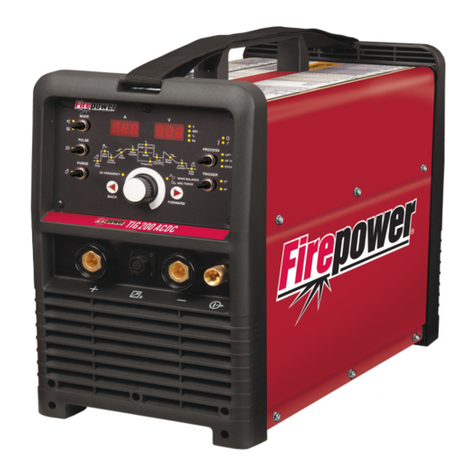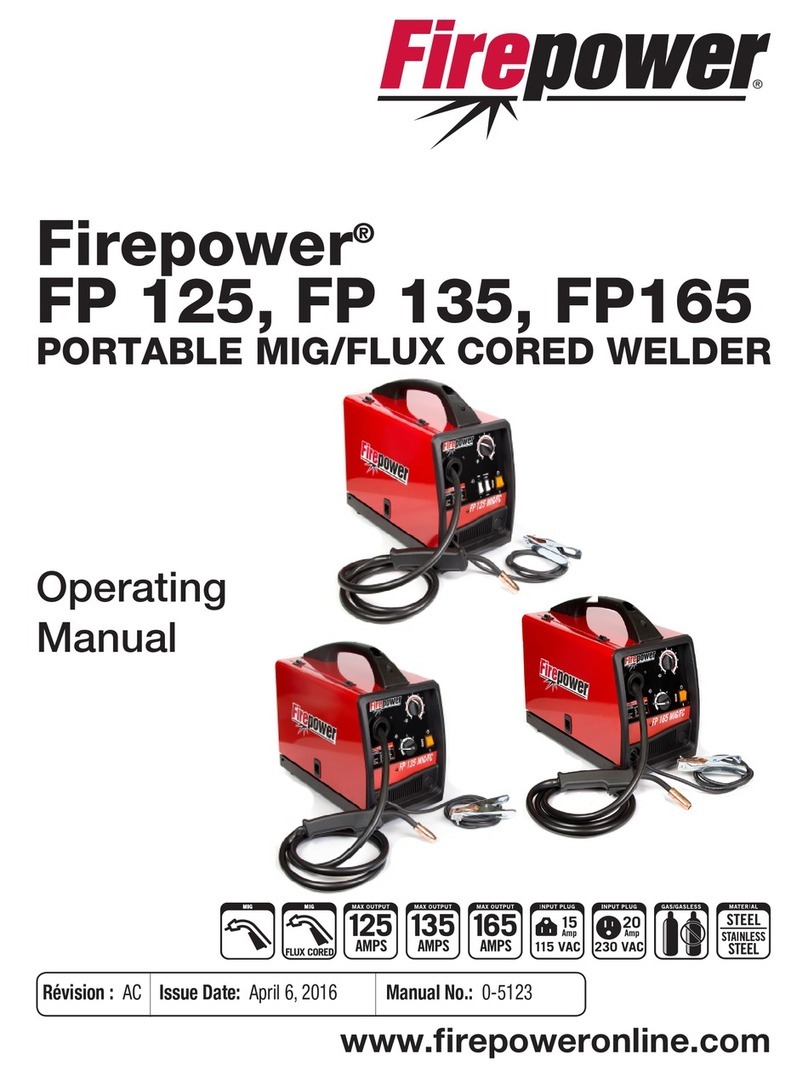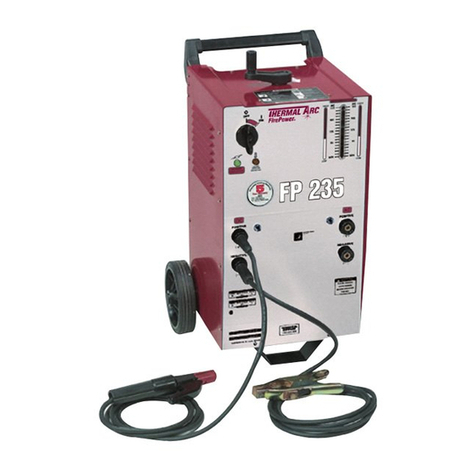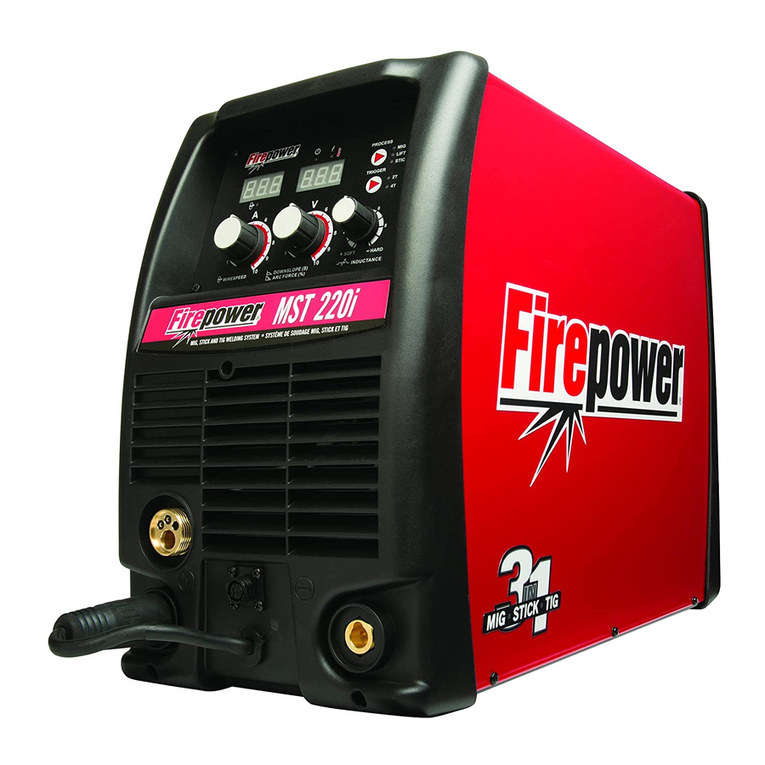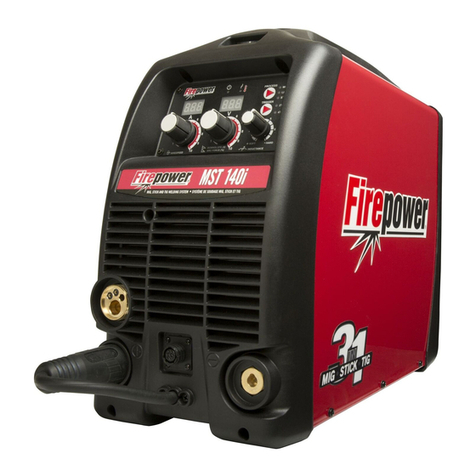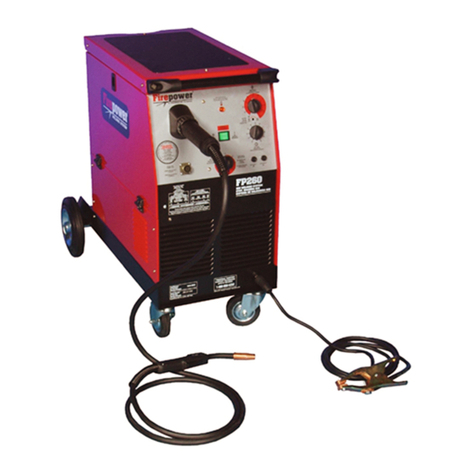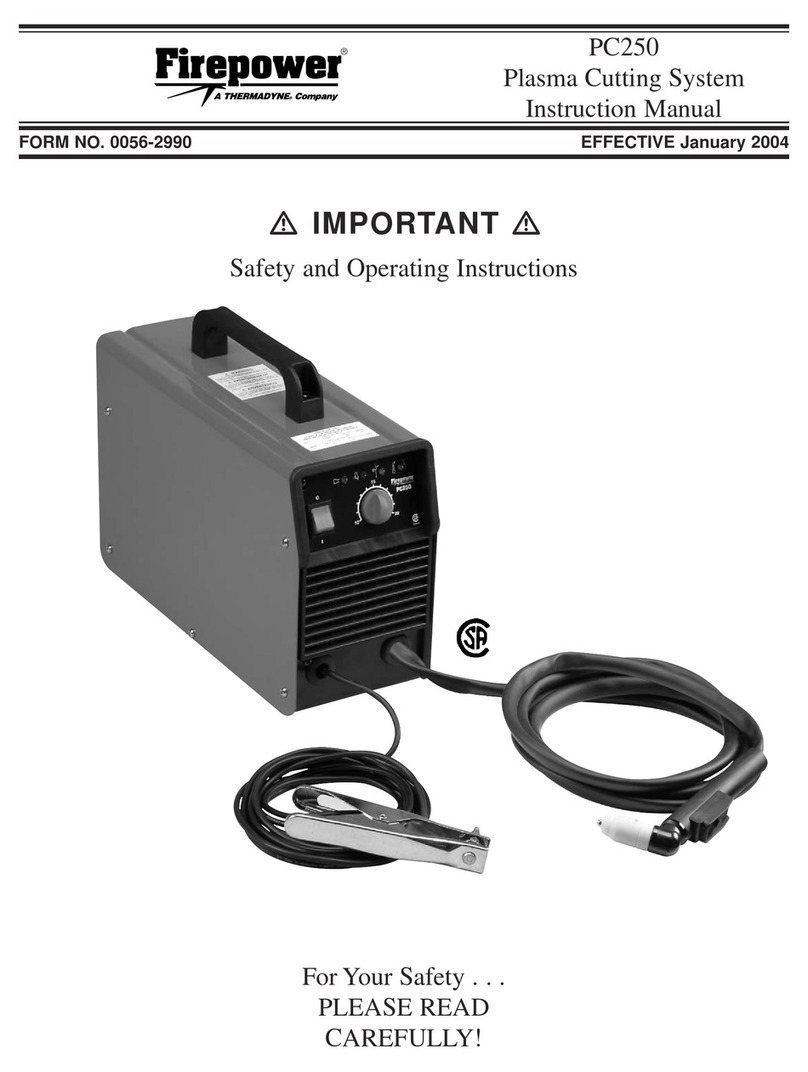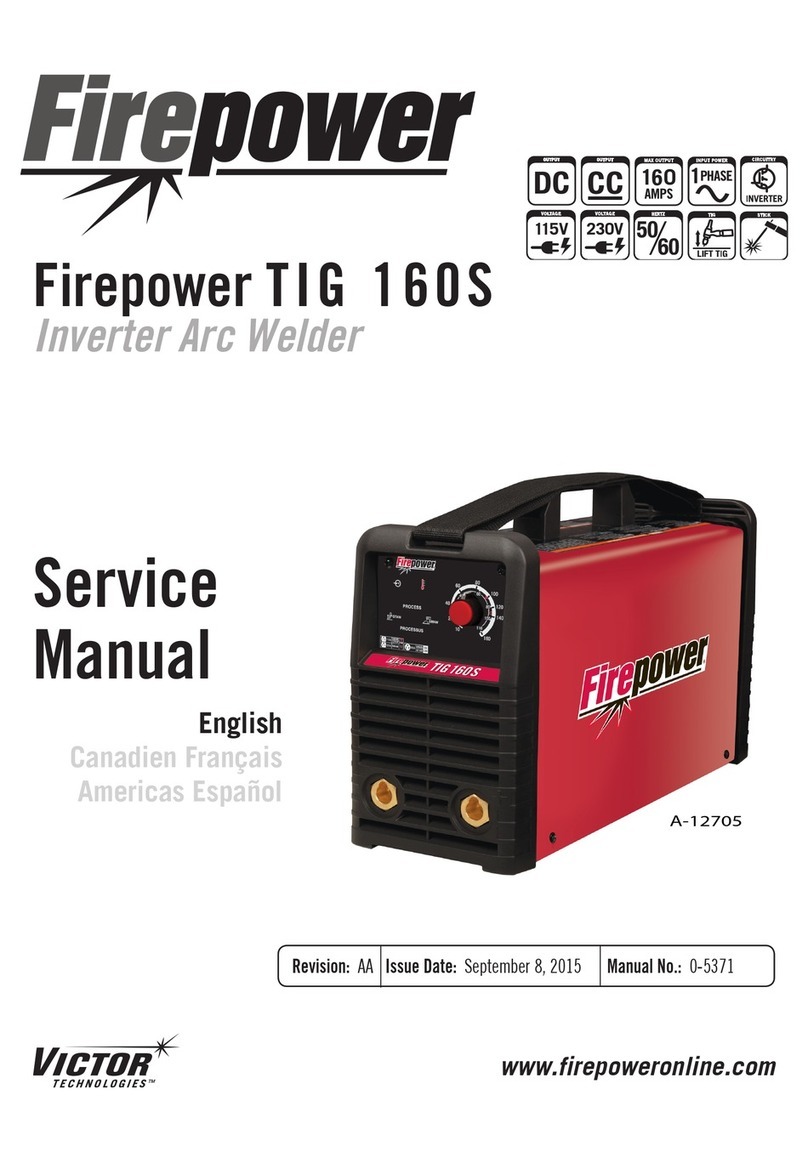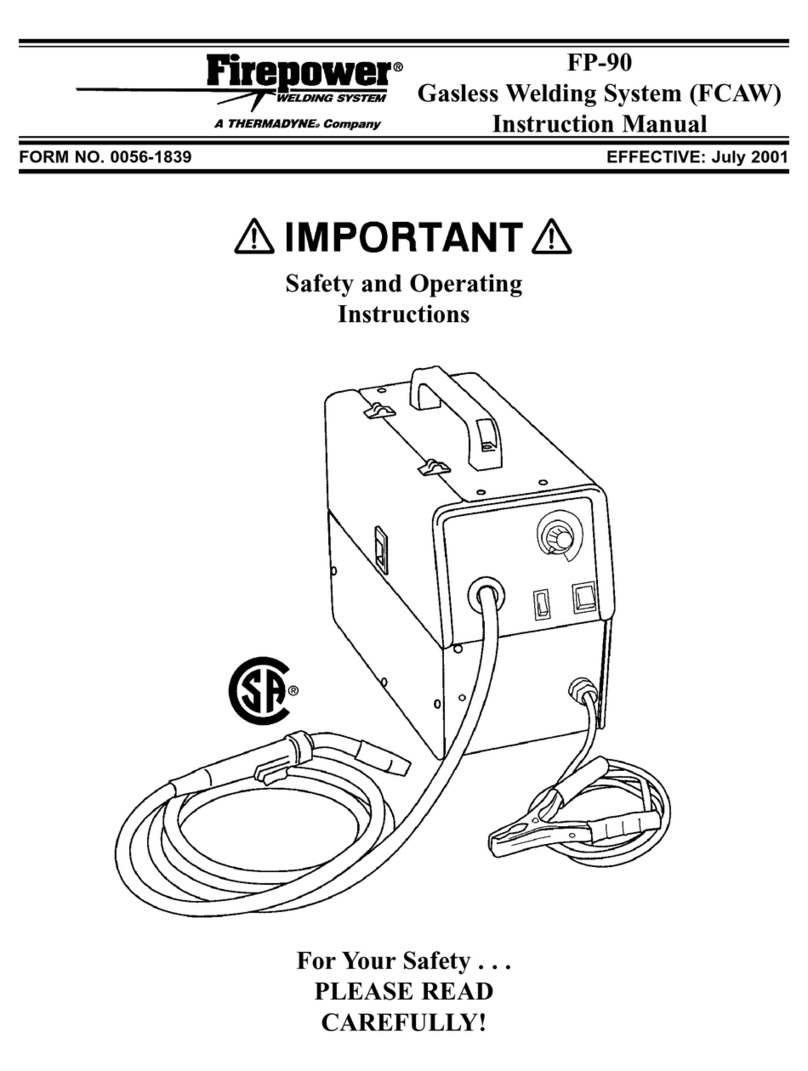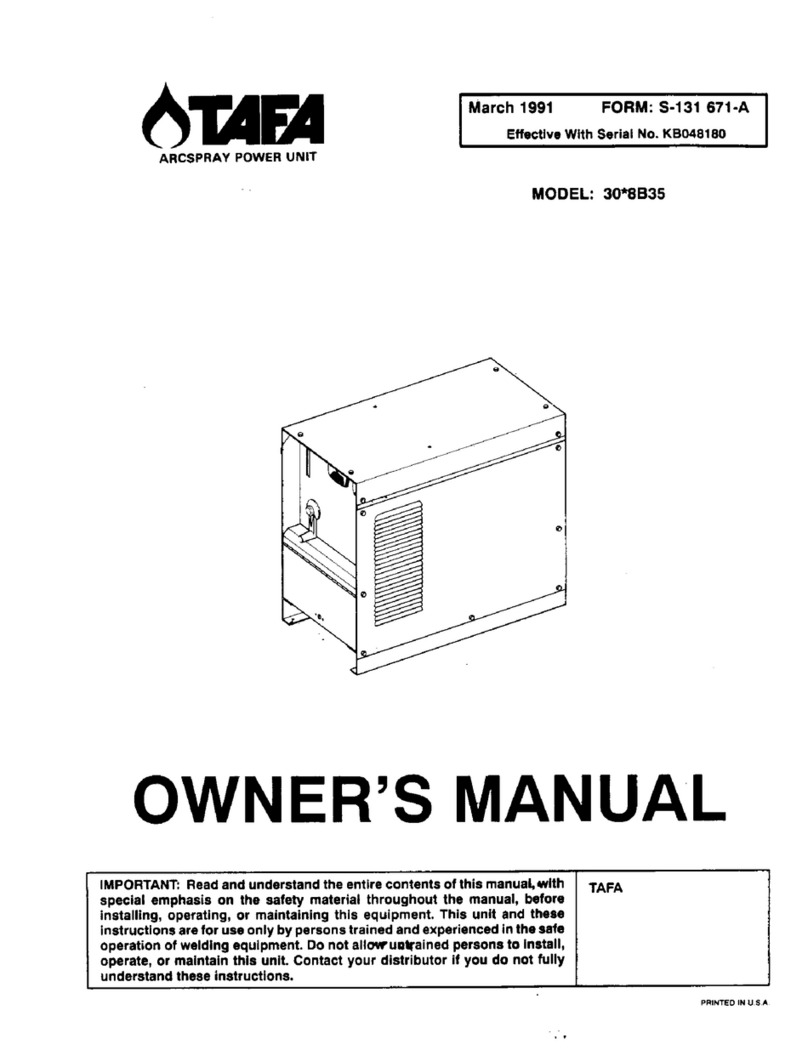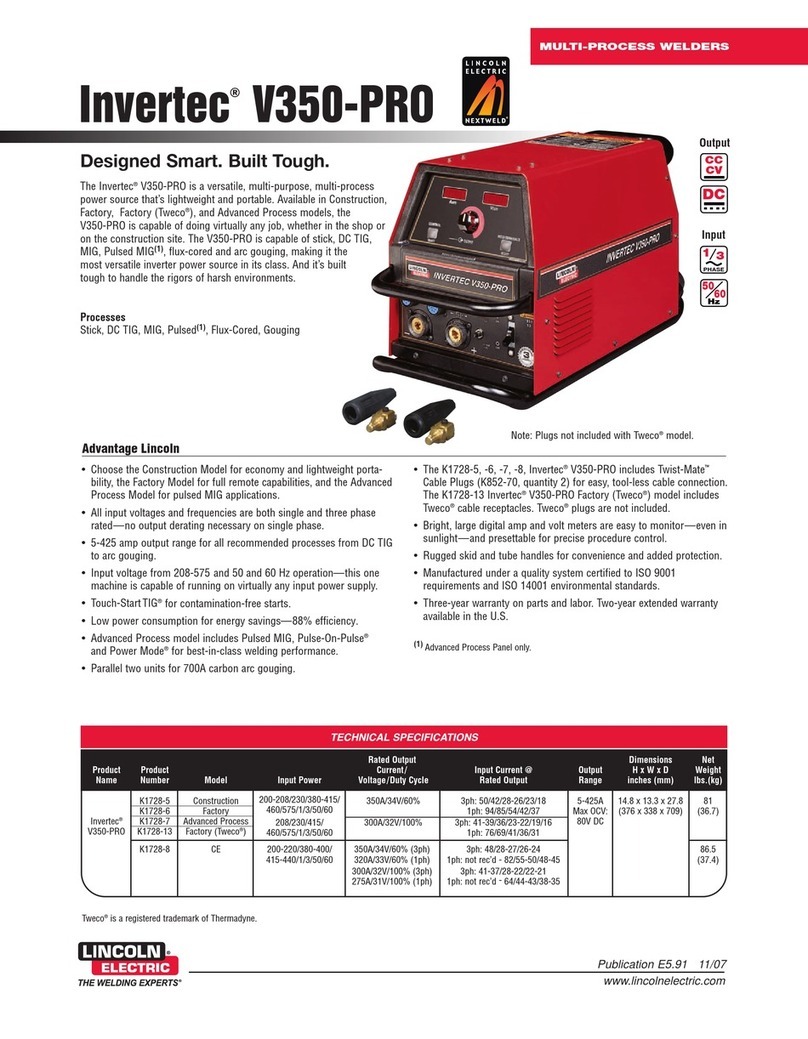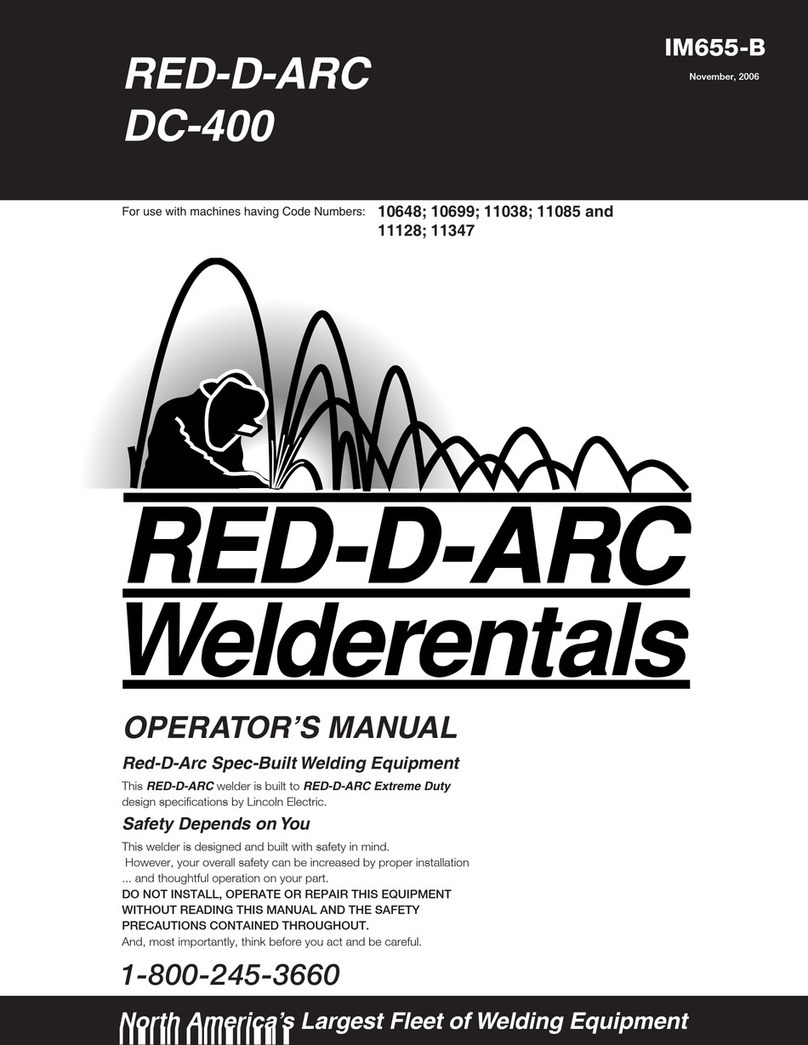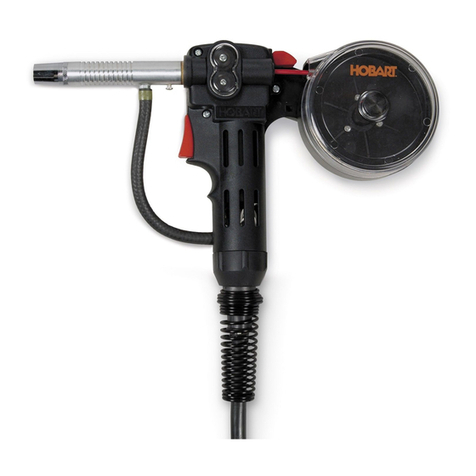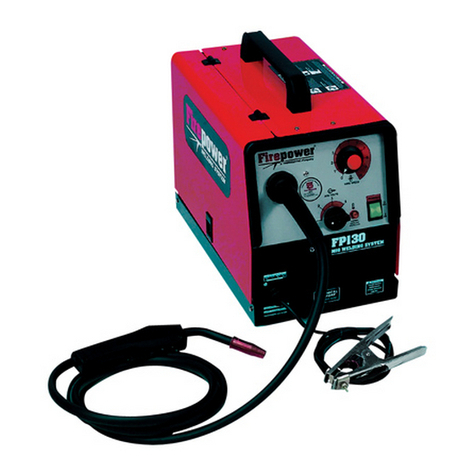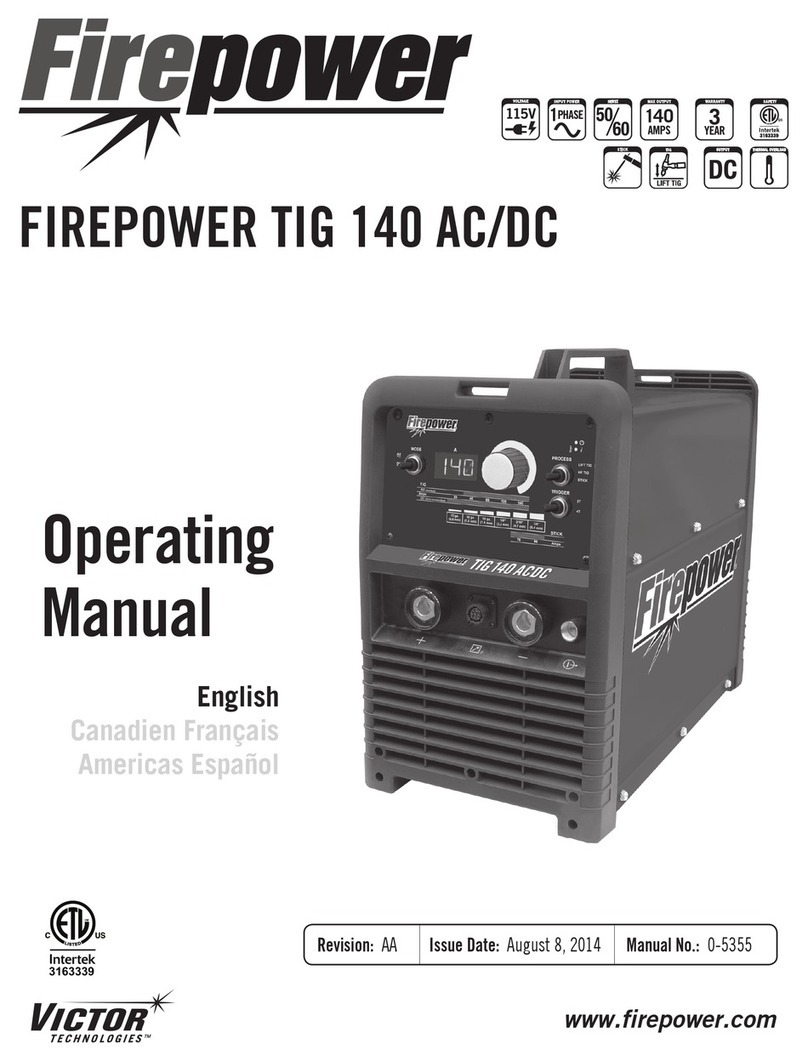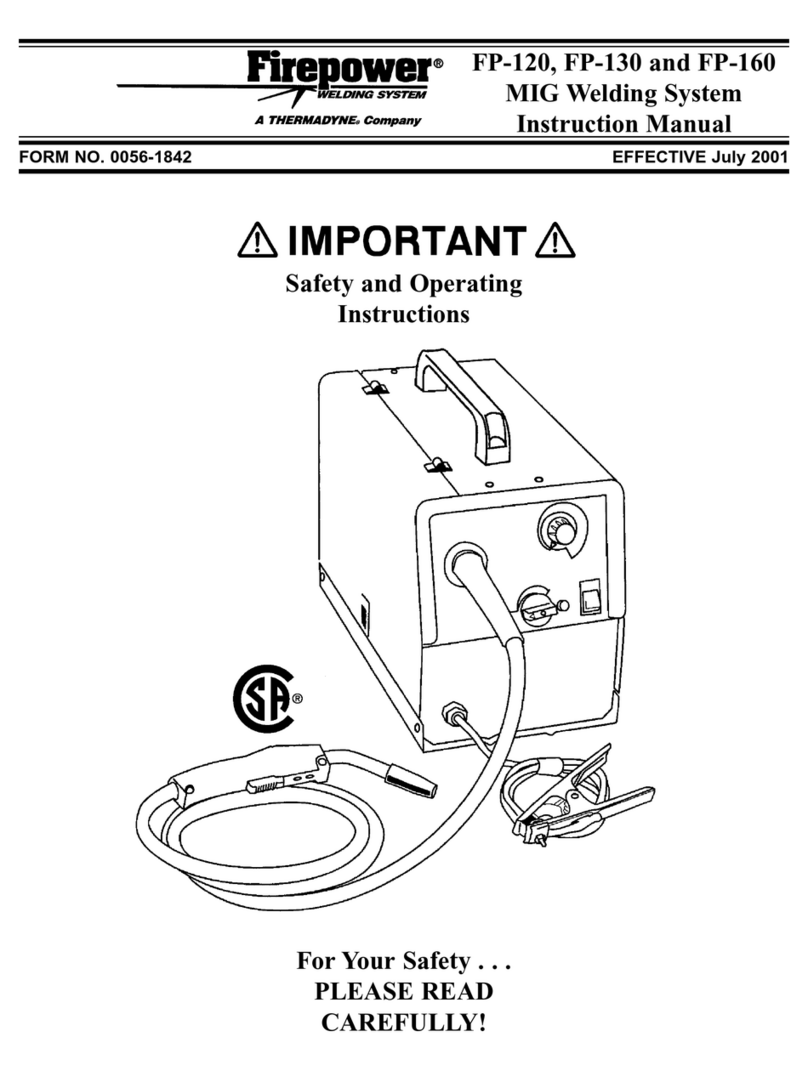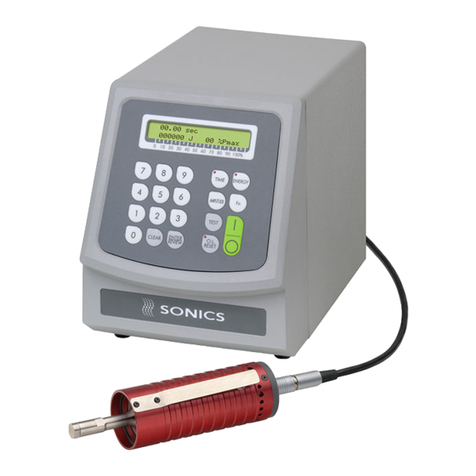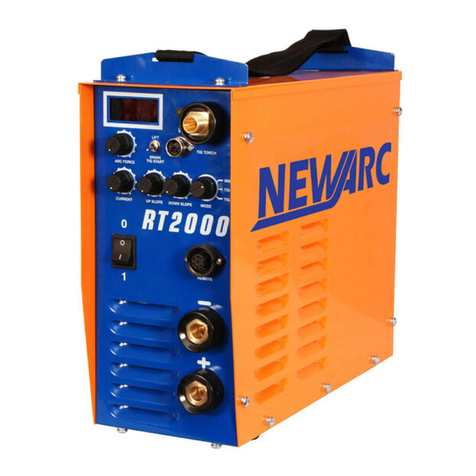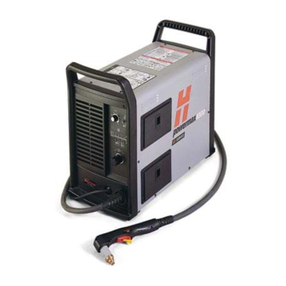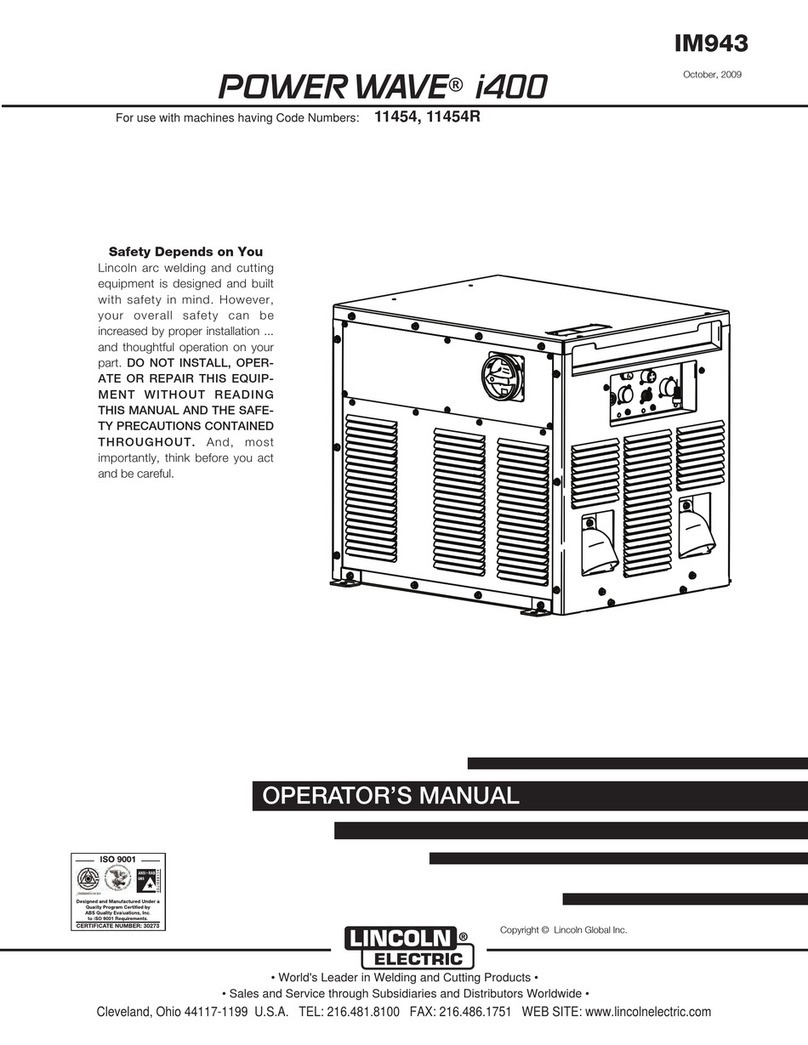
GENERAL INFORMATION 2 Special 6/22/99
a water table unless the hydrogen gas can be eliminated or
dissipated. Trapped hydrogen gas that is ignited will cause an
explosion.
NOISE
Noise can cause permanent hearing loss. Plasma arc processes can
cause noise levels to exceed safe limits. You must protect your ears
from loud noise to prevent permanent loss of hearing.
•To protect your hearing from loud noise, wear protective ear
plugs and/or ear muffs. Protect others in the workplace.
•Noise levels should be measured to be sure the decibels (sound)
do not exceed safe levels.
•For information on how to test for noise, see item 1 in Subsec-
tion 1.3, Publications, in this manual.
PLASMA ARC RAYS
PlasmaArc Rays can injure your eyes and burn your skin. The plasma
arc process produces very bright ultra violet and infra red light. These
arc rays will damage your eyes and burn your skin if you are not
properly protected.
•To protect your eyes, always wear a welding helmet or shield.
Also always wear safety glasses with side shields, goggles or
other protective eye wear.
•Wear welding gloves and suitable clothing to protect your skin
from the arc rays and sparks.
•Keep helmet and safety glasses in good condition. Replace lenses
when cracked, chipped or dirty.
•Protect others in the work area from the arc rays. Use protective
booths, screens or shields.
•Use the shade of lens as recommended in Subsection 1.3, item 4.
1.3 Publications
Refer to the following standards or their latest revisions for more in-
formation:
1. OSHA, SAFETY AND HEALTH STANDARDS, 29CFR 1910,
obtainable from the Superintendent of Documents, U.S. Gov-
ernment Printing Office, Washington, D.C. 20402
2. ANSI Standard Z49.1, SAFETYIN WELDING AND CUTTING,
obtainable from the American Welding Society, 550 N.W.
LeJeune Rd, Miami, FL 33126
3. NIOSH, SAFETYAND HEALTH INARC WELDING AND GAS
WELDING AND CUTTING, obtainable from the Superinten-
dent of Documents, U.S. Government Printing Office, Wash-
ington, D.C. 20402
4. ANSI Standard Z87.1, SAFE PRACTICES FOR OCCUPATION
AND EDUCATIONAL EYE AND FACE PROTECTION, ob-
tainable from American National Standards Institute, 1430
Broadway, New York, NY 10018
5. ANSI Standard Z41.1, STANDARD FOR MEN’S SAFETY-TOE
FOOTWEAR, obtainable from the American National Stan-
dards Institute, 1430 Broadway, New York, NY 10018
6. ANSI Standard Z49.2, FIRE PREVENTION IN THE USE OF
CUTTING AND WELDING PROCESSES, obtainable from
American National Standards Institute, 1430 Broadway, New
York, NY 10018
7. AWS Standard A6.0, WELDING AND CUTTING CONTAIN-
ERS WHICH HAVE HELD COMBUSTIBLES, obtainable from
American Welding Society, 550 N.W. LeJeune Rd, Miami, FL
33126
8. NFPAStandard 51, OXYGEN-FUELGAS SYSTEMS FORWELD-
ING, CUTTING AND ALLIED PROCESSES, obtainable from
the National Fire Protection Association, Batterymarch Park,
Quincy, MA 02269
9. NFPA Standard 70, NATIONAL ELECTRICAL CODE, obtain-
able from the National Fire Protection Association,
Batterymarch Park, Quincy, MA 02269
10. NFPAStandard 51B, CUTTINGAND WELDING PROCESSES,
obtainable from the National Fire Protection Association,
Batterymarch Park, Quincy, MA 02269
11. CGA Pamphlet P-1, SAFE HANDLING OF COMPRESSED
GASES IN CYLINDERS, obtainable from the Compressed Gas
Association, 1235 Jefferson Davis Highway, Suite 501, Arling-
ton, VA 22202
12. CSA Standard W117.2, CODE FOR SAFETY IN WELDING
AND CUTTING, obtainable from the Canadian Standards As-
sociation, Standards Sales, 178 Rexdale Boulevard, Rexdale,
Ontario, Canada M9W 1R3
13. NWSA booklet, WELDING SAFETY BIBLIOGRAPHY obtain-
able from the National Welding Supply Association, 1900Arch
Street, Philadelphia, PA 19103
14. American Welding Society Standard AWSF4.1, RECOM-
MENDED SAFE PRACTICES FOR THE PREPARATION FOR
WELDING AND CUTTING OF CONTAINERS AND PIPING
THAT HAVE HELD HAZARDOUS SUBSTANCES, obtainable
from theAmerican Welding Society, 550 N.W. LeJeune Rd, Mi-
ami, FL 33126
15. ANSI Standard Z88.2, PRACTICE FOR RESPIRATORY PRO-
TECTION, obtainable from American National Standards In-
stitute, 1430 Broadway, New York, NY 10018
1.4 Note,AttentionetAvertissement
Dans ce manuel, les mots “note,”“attention,”et “avertissement”sont
utilisés pour mettre en relief des informations àcaractère important.
Ces mises en relief sont classifiées comme suit :
NOTE
Toute opération,procédureourenseignement général surlequel
il importe d’insister davantage ou qui contribue à l’efficacité
de fonctionnement du système.
ATTENTION
Toute procédure pouvant résulter l’endommagement du
matériel en cas de non-respect de la procédure en question.
AVERTISSEMENT
Toute procédure pouvant provoquer des blessures de
l’opérateur ou des autres personnes se trouvant dans la zone
de travail en cas de non-respect de la procédure en question.
